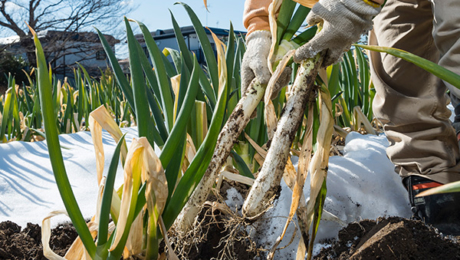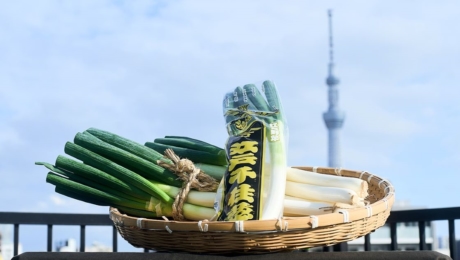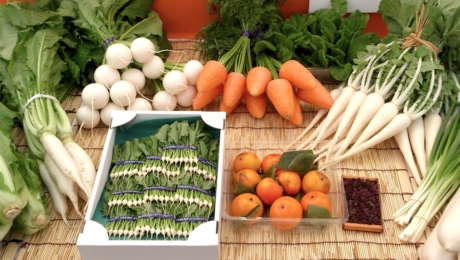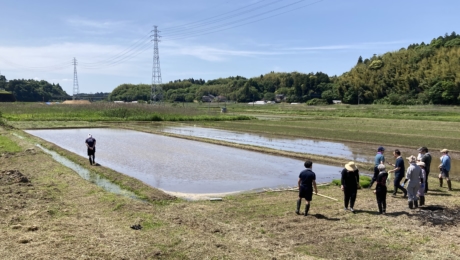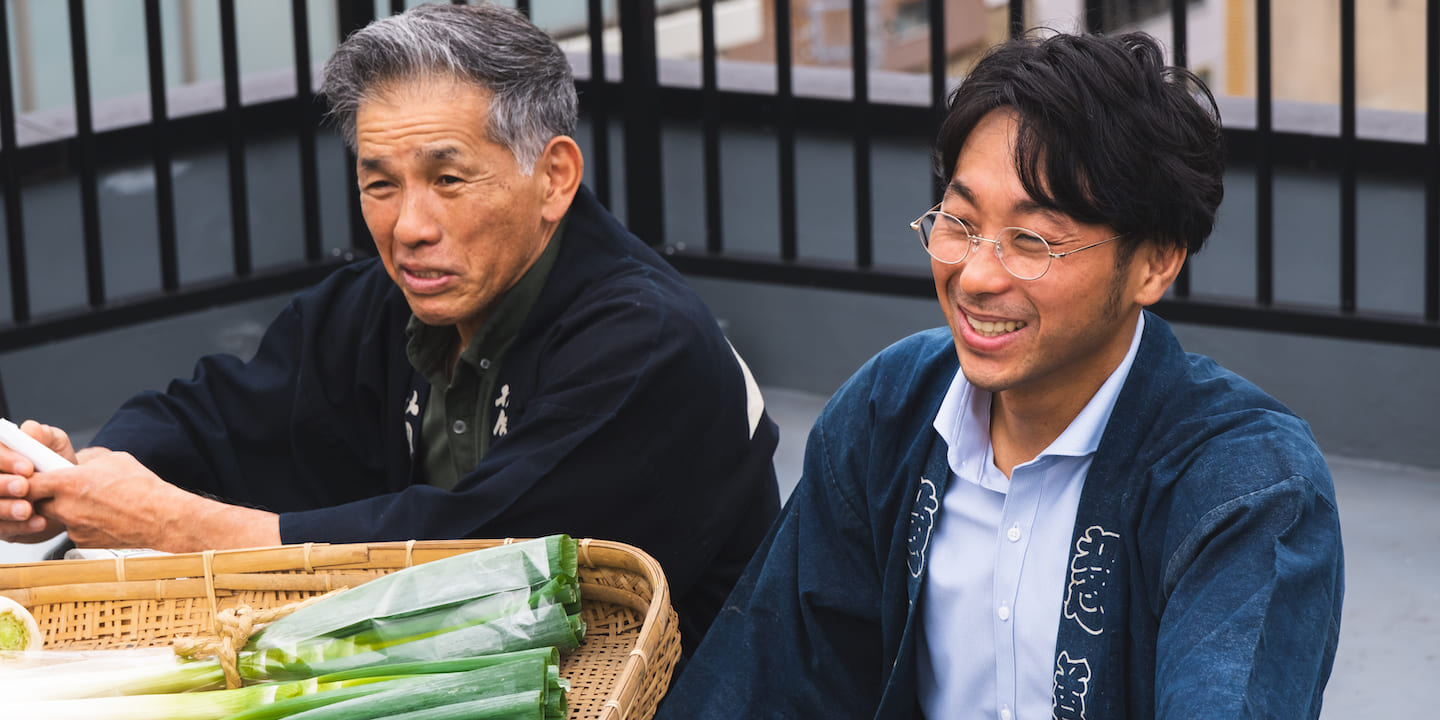
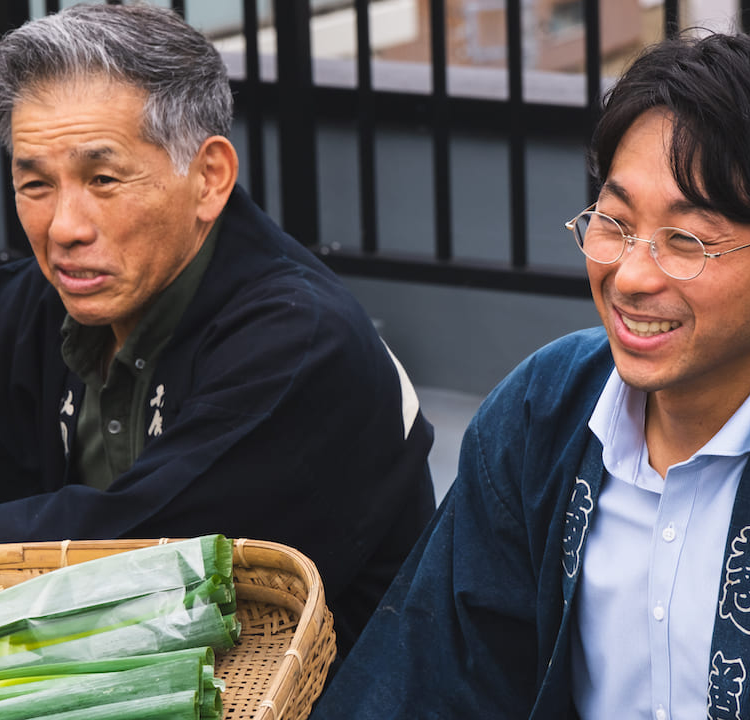
Disseminating the taste of traditional vegetables from Edo to the rest of the country and the world
2023.08.09
FOODWhen chopped raw and served with sukiyaki or yakiniku, the synergy of the fresh spiciness of the leek and the delicious flavor of the meat makes it easy to eat as much as you like. If you cook it thoroughly by boiling or grilling it, you can enjoy its gentle sweetness, which also makes your chopsticks go faster and faster. The “Edo Senju-Negi(Japanese leek)” is truly a gem that can play both the leading and supporting roles.
Tsunehiro Tanaka is the fourth generation of “Negizen,” a long-established leek supplier established in 1885. He never stops talking about the deliciousness of Senju leek, especially his passion for “Edo Senju-Negi,” which he has revived to cultivate.
Edo Senju-Negi is a fixed type of Senju-Negi that has been used mainly in soba noodle restaurants since the Edo period. When beef hot pot became popular from the end of the Edo period to the beginning of the Meiji period, it became indispensable as a supporting role in hot pots since then. However, due to the difficulty of cultivation methods and the limited season, spring onions that could be mass-produced gradually became mainstream as breeding progressed. By the end of the Showa period (1926-1989), the number of farmers growing “Edo Senju-Negi”decreased and it disappeared from the market.
“I began to think that it would be a shame to let the taste that has been loved and eaten by so many people for so many years die out.” says Tanaka, “so I decided to try my hand at growing it again to revive the fixed species Senju leek.” However, the road was not easy.

It took more than 10 years to revive something satisfactory, starting with tilling the soil with the cooperation and guidance of growers and mobilizing all of the company’s staff, followed by a trial-and-error processof preparing the soil and examining fertilizers.
There were times when I thought about quitting because of the many failures, but the employees worked hard with me. I was so happy that I wanted to jump out of my skin when I found what I thought was the right taste. Even now, we struggle every day to keep the taste and traditions that have been handed down since the Edo period alive.
The production of “Edo Senju Negi,” which is made from a fixed seed, accounts for less than one percent of the total production of leeks in Japan. Even so, during the seasonal season from early fall to late winter, orders come in from soba noodle restaurants, nabe restaurants, yakitori restaurants, and other restaurants throughout Japan, and the company takes great care to ensure that the leeks are always delivered in the freshest possible condition. The company is also available for individual purchase by ordering online.
On the other hand, Mr.Tanaka says that he now wants his customers, who enjoy the taste of “Edo Senju Negi,” to enjoy the delicious onion even when the “Edo Senju Negi” is not harvested.
So, we have started to grow with contracted farmers and to sell them through the market. We named this one “Negizen Senju-Negi. It is almost the same as “Edo Senju Negi” in appearance and its gentle sweetness increases as it is cooked. The flavor is as rich as the “Edo Senju-Negi”.
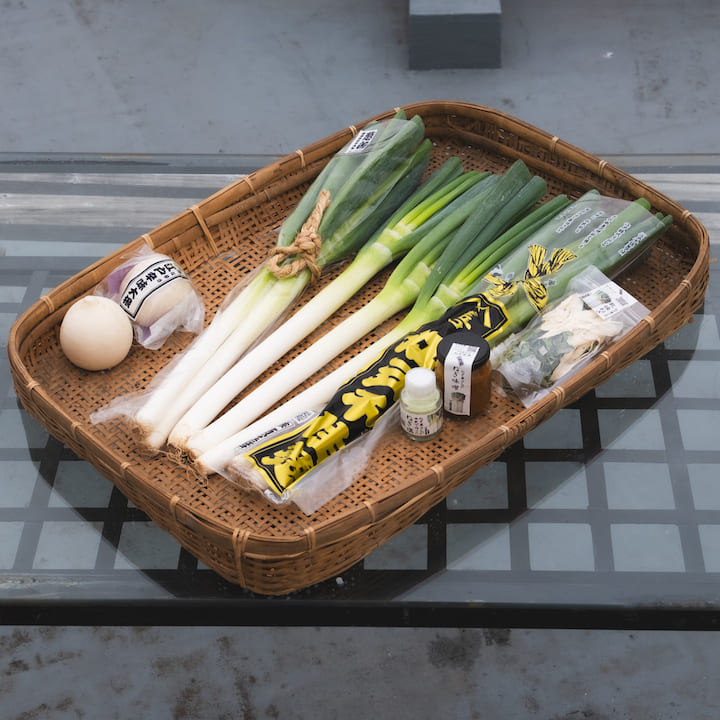
Furthermore, in the process of trial and error in cultivating “Edo Senju Negi,” Mr. Tanaka learned that there is a spicy radish that has been around since the Edo period. In cooperation with a benevolent farmer in Nagano Prefecture, he succeeded in creating a spicy daikon with an ideal flavor. This “Edo Karami daikon (spicy radish)” is another confident product that took more than 10 years to produce.
“During the Kyoho period (1716-1736), there was a hermitage called Doko-an in a temple in Shibasaki-machi, Asakusa. The owner was from Nagano, Shinshu and was said to be a master soba maker. The owner was from Nagano, Shinshu and was said to be an expert in making soba. He served soba with grated spicy daikon brought from Shinshu instead of bonito soup stock, which was very popular. The name Shibasak is no longer in existence, but it is very close to our place,
I thought it was a taste of Edo, so I thought this might be some kind of a coincidence. When I visited a farmer in Nagano and tried his daikon radish, I found it to be refreshingly pungent with an indescribable flavor. I really want to make it! I was so excited that I decided to try it. ” said Mr. Tanaka.
The “Edo Karami daikon” is carefully cultivated for 50 to 60 days with minimal water and fertilizer, and is grown with fixed seeds and some improved seeds.

Hoping that more people will appreciate the traditional deliciousness of the vegetable loved by the people of Edo, the company has recently begun developing processed products such as “Negi Salt,” “Negi Miso,” and “Dried Negi” that can be easily used.
“I think it will be a good opportunity for people overseas to try the taste of leeks from Edo,” says his son, Yasuaki, “since processed products can be used in a wider variety of dishes and easily shipped. With overseas markets in mind, we look forward to the future development of Negizen.”



